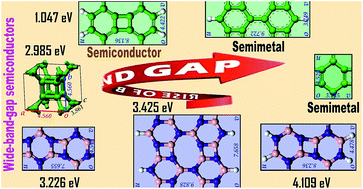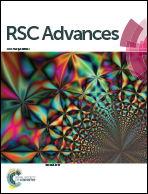Computational study of the structure, UV-vis absorption spectra and conductivity of biphenylene-based polymers and their boron nitride analogues†
Abstract
In the present study, we calculated the electronic and spectral properties of the one- and two-dimensional carbon and boron nitride materials composed of four-, six- and eight-membered rings (the (4, 6, 6, 8) topology) on the basis of density functional theory, including the band structure analysis for the infinite structures. We found that biphenylene-based two-dimensional (2D) sheets and zigzag-type biphenylene-based one-dimensional (1D) ribbons exhibit a semi-metal character. At the same time, the armchair 1D biphenylene-based ribbons possess a narrow-band-gap structure, while boron nitride 2D sheets, 1D zigzag- and armchair-type ribbons exhibit a wide-band-gap semiconducting nature. Simple single-point calculations with a periodic boundary condition generally underestimate the band-gap values in comparison with band structure calculations accounting for the supercell optimization. But in the general case, both approaches provide a correct explanation of the band-gap value. In this work, we also performed for the first time computational modelling of a novel porous biphenylene-based wide-band-gap carbon allotrope, which demonstrated the complexation ability relative to metal atoms forming the metal–carbon intercalates.



 Please wait while we load your content...
Please wait while we load your content...